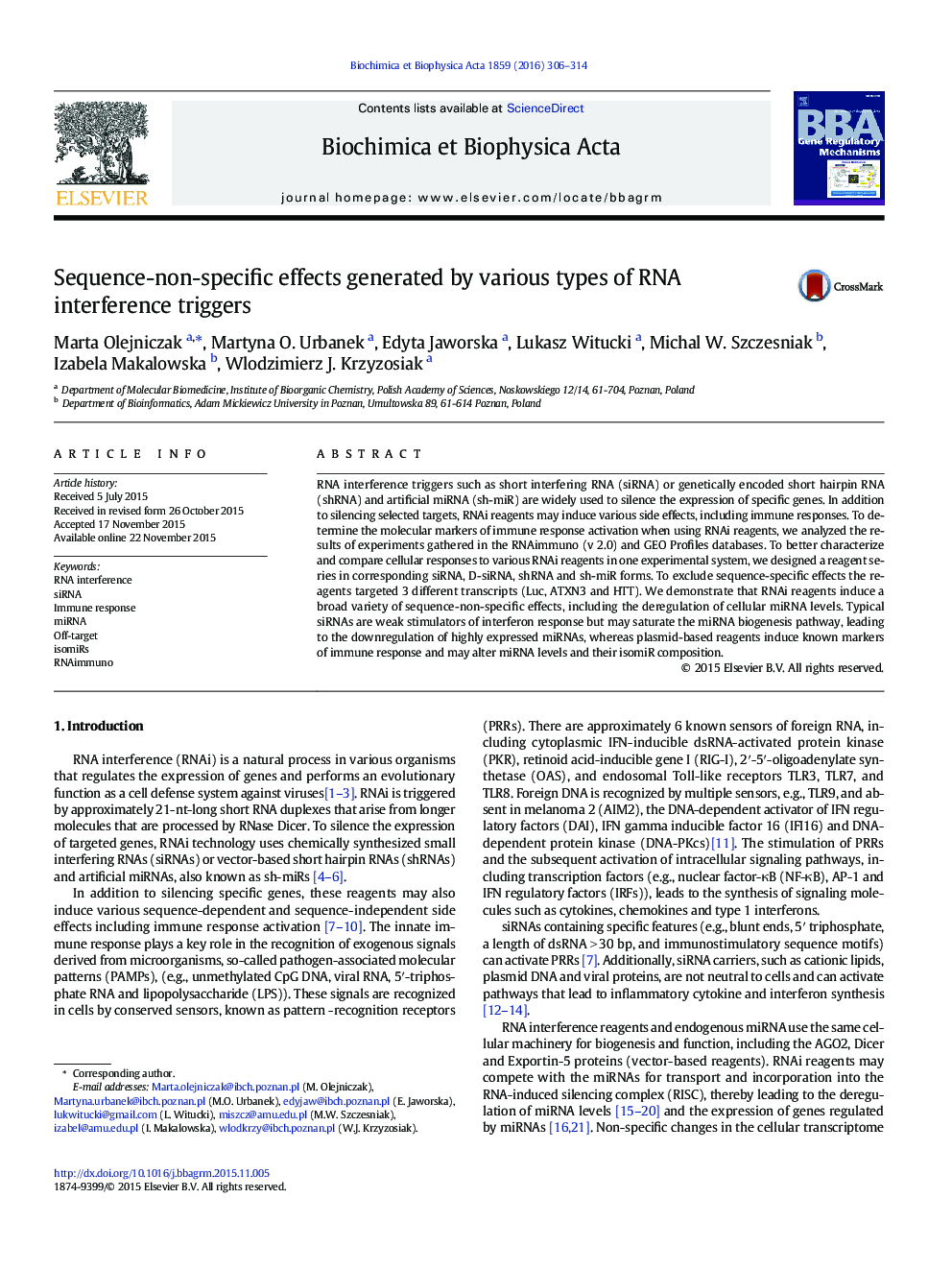| Article ID | Journal | Published Year | Pages | File Type |
|---|---|---|---|---|
| 1946341 | Biochimica et Biophysica Acta (BBA) - Gene Regulatory Mechanisms | 2016 | 9 Pages |
•vector-based RNAi triggers are stronger stimulators of IFN response than siRNAs.•most of the effects induced by vector-based reagents result from the transfection of plasmid DNA.•TLR3 and IFNα2 as specific molecular markers of immune response stimulation by siRNA and shRNA/sh-miRs, respectively.•poly(I:C) may not serve as a universal positive control of immune response stimulation in RNAi experiments.•transfection of RNAi triggers influences miRNA levels and the isomiRs composition
RNA interference triggers such as short interfering RNA (siRNA) or genetically encoded short hairpin RNA (shRNA) and artificial miRNA (sh-miR) are widely used to silence the expression of specific genes. In addition to silencing selected targets, RNAi reagents may induce various side effects, including immune responses. To determine the molecular markers of immune response activation when using RNAi reagents, we analyzed the results of experiments gathered in the RNAimmuno (v 2.0) and GEO Profiles databases. To better characterize and compare cellular responses to various RNAi reagents in one experimental system, we designed a reagent series in corresponding siRNA, D-siRNA, shRNA and sh-miR forms. To exclude sequence-specific effects the reagents targeted 3 different transcripts (Luc, ATXN3 and HTT). We demonstrate that RNAi reagents induce a broad variety of sequence-non-specific effects, including the deregulation of cellular miRNA levels. Typical siRNAs are weak stimulators of interferon response but may saturate the miRNA biogenesis pathway, leading to the downregulation of highly expressed miRNAs, whereas plasmid-based reagents induce known markers of immune response and may alter miRNA levels and their isomiR composition.
